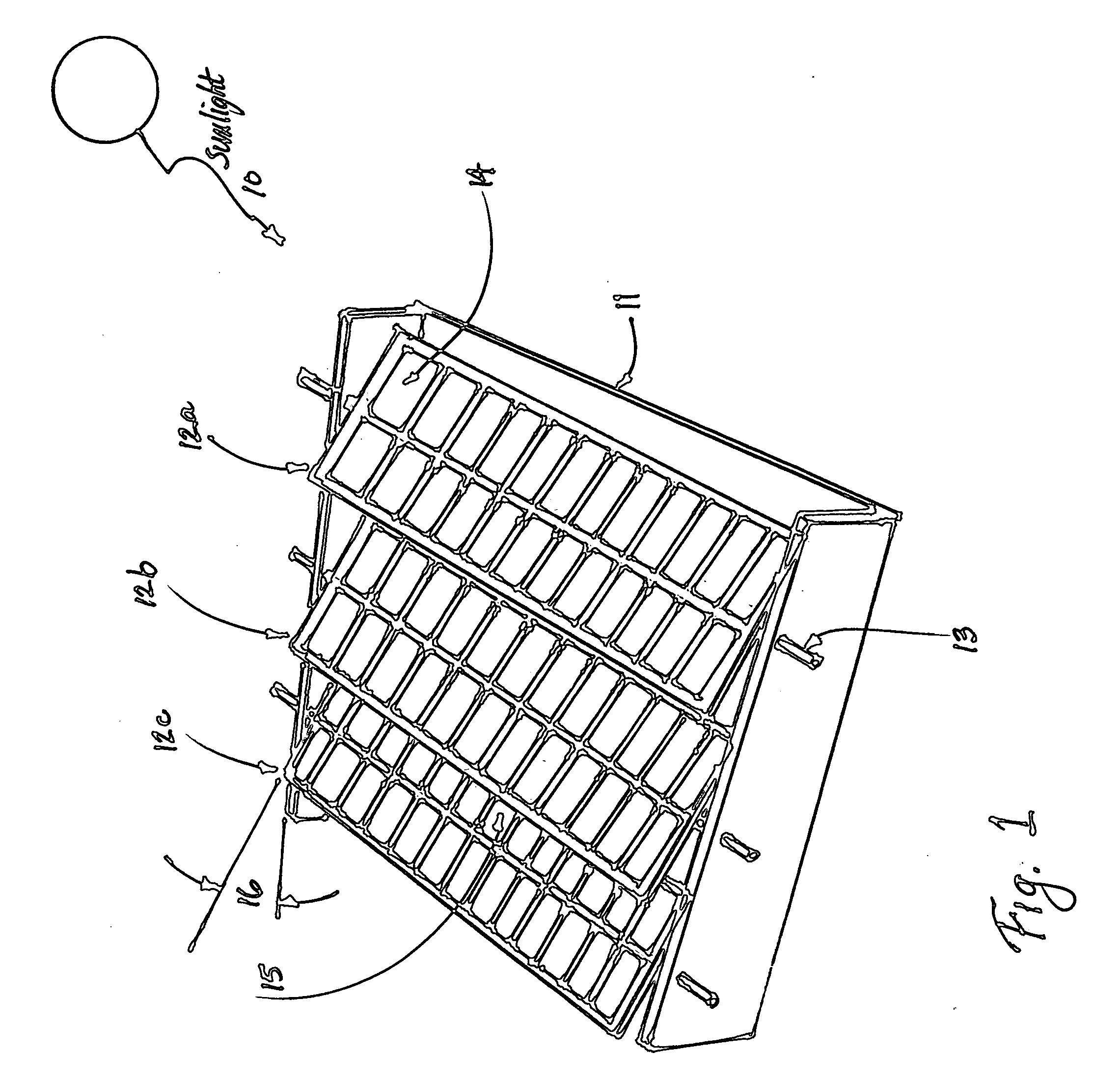Method and apparatus for solar panel tracking
a solar panel and tracking method technology, applied in the direction of instruments, lighting and heating apparatus, sustainable buildings, etc., can solve the problems of poor sun tracking performance, large flat “billboard” sized solar panels, unattractive residential purposes, etc., to improve the tracking ability and improve the accuracy.
- Summary
- Abstract
- Description
- Claims
- Application Information
AI Technical Summary
Benefits of technology
Problems solved by technology
Method used
Image
Examples
Embodiment Construction
[0019]As already shown in FIG. 1, the preferred embodiment for solar panel arrays of the present invention is to arrange long rectangular solar panels in an array like a shutter or a Venetian blind, with the longitudinal axis, 13, of the solar panels, 12a, 12b and 12c, to be aimed directly South, and being enabled to rotate about the longitudinal axis from East to West during daylight hours to thereby track the movement of the sun.
[0020]A diagram of such a sun tracking module is shown in FIG. 2, which provides one preferred embodiment of the present invention. As shown in FIG. 2, there are 9 solar panels, 20a through 20i, arranged in a modular frame, 21, with outside dimensions of 24 by 48 inches, i.e. 2×4 feet, which fits with most of the roof framing dimensions used in the United States. Each solar panel is approximately 4.3 inches wide by 21.8 inches long, and contains 30 solar PV cells connected in series, each cell about 4.0×0.7 inches in size, with a total of about 84 sq.in. o...
PUM
 Login to View More
Login to View More Abstract
Description
Claims
Application Information
 Login to View More
Login to View More - R&D
- Intellectual Property
- Life Sciences
- Materials
- Tech Scout
- Unparalleled Data Quality
- Higher Quality Content
- 60% Fewer Hallucinations
Browse by: Latest US Patents, China's latest patents, Technical Efficacy Thesaurus, Application Domain, Technology Topic, Popular Technical Reports.
© 2025 PatSnap. All rights reserved.Legal|Privacy policy|Modern Slavery Act Transparency Statement|Sitemap|About US| Contact US: help@patsnap.com



